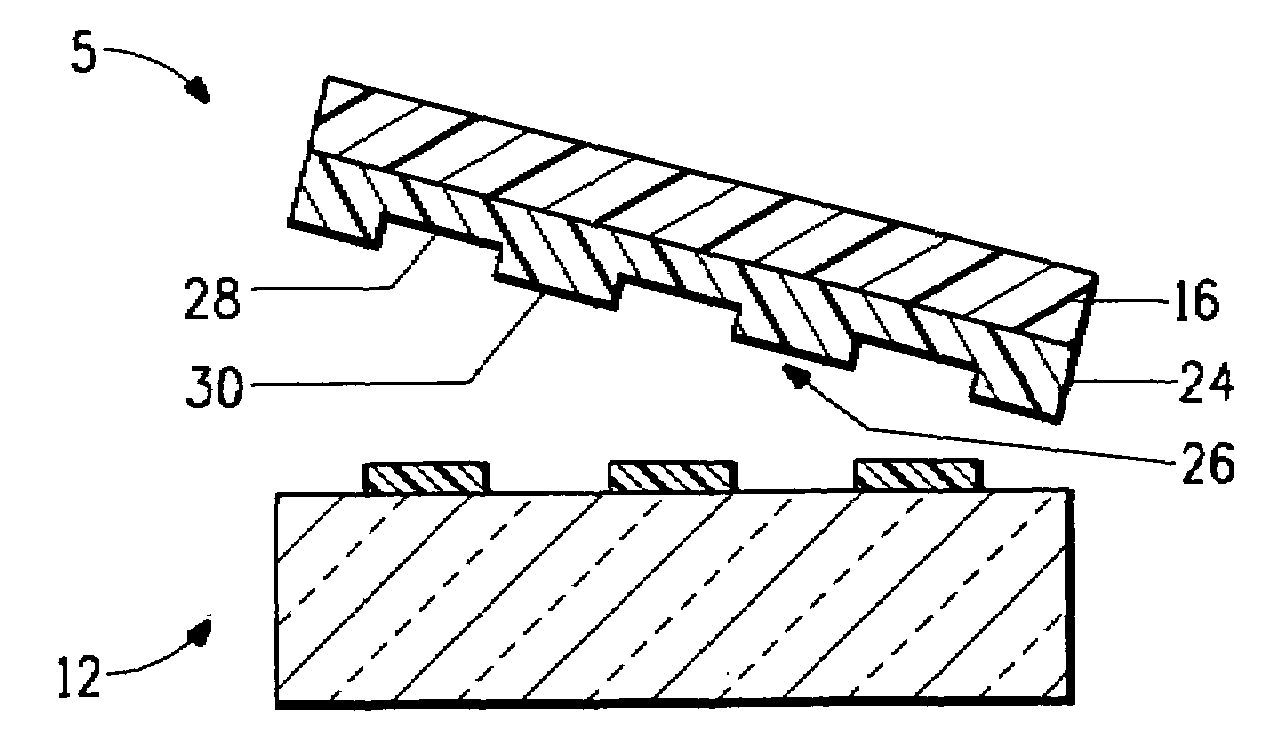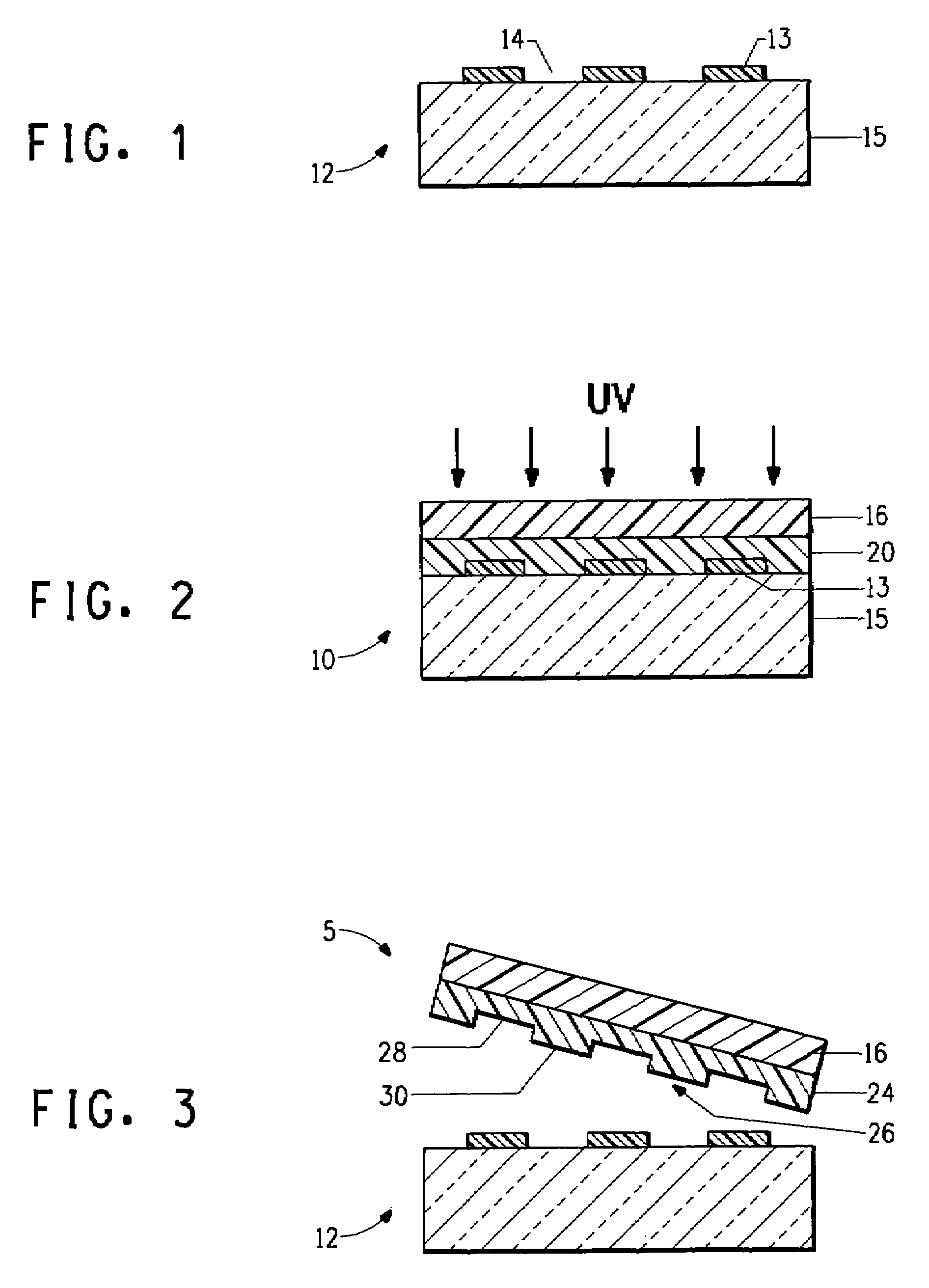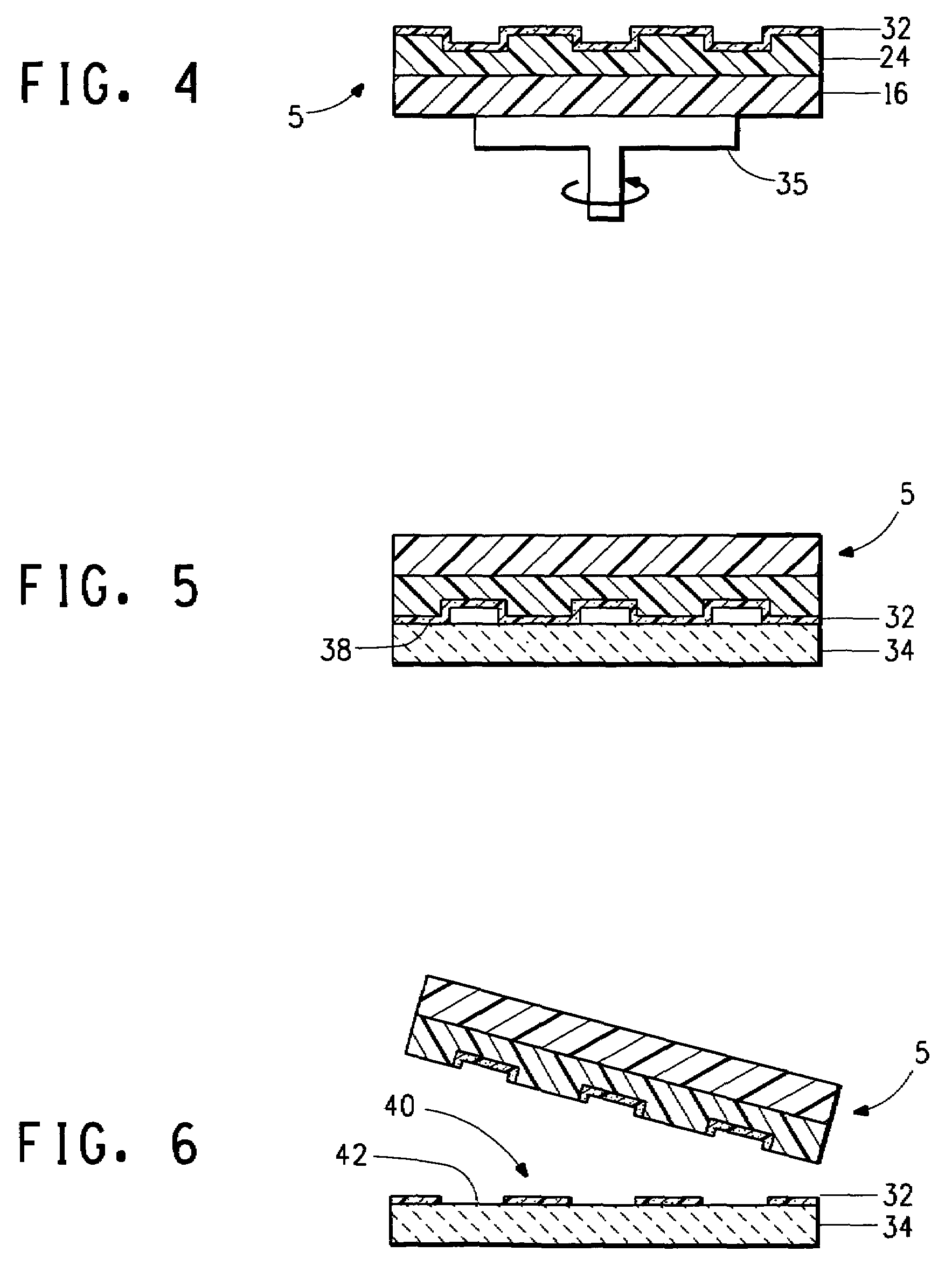Method to form a pattern of functional material on a substrate
a functional material and substrate technology, applied in the field of photolithography, can solve the problems of too expensive photolithography, complex multi-step process, limited to forming metal patterns, microcontact printing of devices and components having patterns,
- Summary
- Abstract
- Description
- Claims
- Application Information
AI Technical Summary
Benefits of technology
Problems solved by technology
Method used
Image
Examples
example 1
[0067]The following example demonstrates a method to form a pattern on a substrate. Silver nanoparticles are formed into a pattern onto a flexible base that can provide a functional source-drain level of a thin film transistor.
[0068]Master Preparation:
[0069]A thin hexamethyldisilazane layer (HMDS) (from Aldrich) was spun coated onto a 2 inch (5.1 cm) silicon wafer at 3000 rpm for 60 seconds.
[0070]The HMDS is an adhesion promoter for a photoresist material on a silicon wafer. A Shipley positive photoresist, type1811 (from Rohm and Haas) was spun coated onto the HMDS layer at 3000 rpm for 60 seconds. The photoresist film was pre-baked on a hotplate at 115° C. for 1 minute to complete drying. The pre-baked photoresist film was then imagewise exposed through a photomask to ultraviolet radiation of 365 nm for 8 seconds in an I-liner (OAI Mask Aligner, Model 200). After exposure the photoresist was developed in developer type MF-319 (from Rohm and Haas) which is tetramethyl ammonium hydro...
example 2
[0078]The following example demonstrates the method of forming a pattern of functional material using an elastomeric stamp to print a sacrificial mask material. The functional material is silver nanoparticles that form a pattern on a flexible film substrate.
[0079]The master and the elastomeric stamp were prepared as described in Example 1. The relief pattern on the stamp had the same dimensions as those reported for Example 1.
Transfer of Sacrificial Material:
[0080]A sacrificial mask material of a poly(4-vinyl pyridine) (P4VP) solution (from Aldrich, in St Louis, Mo.) was prepared by dissolving the 1% by weight of the P4VP polymer in chloroform (CCl3H) and filtered with 0.2 micron PTFE filter. The P4VP solution was spun coated onto the elastomeric PFPE stamp at 3000 rpm for 60 seconds, and air dried for about 1 minute. The P4VP on the PFPE stamp was then printed onto an acrylic coated side of a 5 mil Melinex® film type ST504 as the substrate, at room temperature without applying any ...
example 3
[0085]The following example demonstrates the method for forming a pattern of a functional material onto a flexible film. The functional material is an organic semiconducting material of a polythiophene.
[0086]The master and the elastomeric stamp were prepared as described in Example 1.
Transfer of Mask Material:
[0087]A solution of 10% by weight of TFE-NB-f-OH copolymer (2-Propanol, 2-[(bicyclo[2.2.1]hept-5-en-2-yloxy)methyl]-1,1,1,3,3,3-hexafluoro-)polymer as shown in the following structure with tetrafluoroethene dissolved in acetone was prepared.
[0088]A mask material of a solution of 1% by weight of Elvacite® 2042, a poly(ethyl methacrylate), (from Lucite) dissolved in acetone was prepared. 10 gr of the TFE-NB-f-OH solution was mixed with 1 gr of the Elvacite solution to form a mixture of a sacrificial masking material. The mask material mixture was spun coated onto the PFPE elastomeric stamp at 5000 rpm for 60 seconds and dried in air. The mask material on the PFPE stamp was contac...
PUM
| Property | Measurement | Unit |
|---|---|---|
| Diameter | aaaaa | aaaaa |
| Thickness | aaaaa | aaaaa |
| Flexibility | aaaaa | aaaaa |
Abstract
Description
Claims
Application Information
 Login to View More
Login to View More - R&D
- Intellectual Property
- Life Sciences
- Materials
- Tech Scout
- Unparalleled Data Quality
- Higher Quality Content
- 60% Fewer Hallucinations
Browse by: Latest US Patents, China's latest patents, Technical Efficacy Thesaurus, Application Domain, Technology Topic, Popular Technical Reports.
© 2025 PatSnap. All rights reserved.Legal|Privacy policy|Modern Slavery Act Transparency Statement|Sitemap|About US| Contact US: help@patsnap.com



